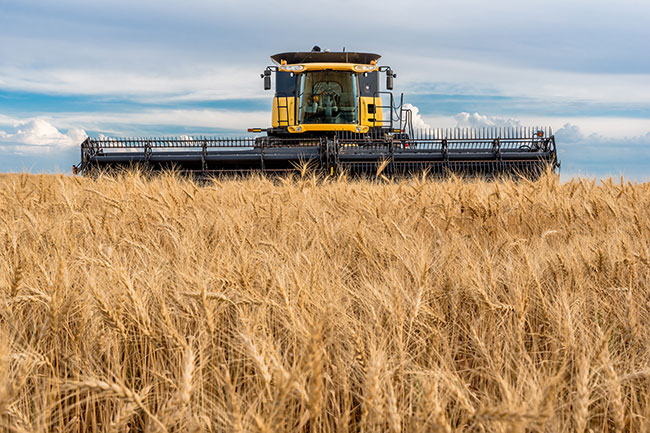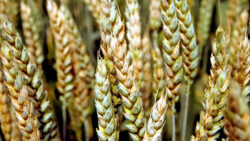
Features
Diseases
Durum line with moderate fusarium resistance a first for Canada – and the world
New variety should be available to producers for spring planting in 2024.
July 11, 2023 By Julienne Isaacs
 A combine harvesting wheat in a Saskatchewan field.
All photos courtesy of ADOBE STOCK.
A combine harvesting wheat in a Saskatchewan field.
All photos courtesy of ADOBE STOCK. Canada’s first durum wheat variety with intermediate resistance to fusarium head blight (FHB) is an achievement that was many years in the making.
The durum line, called DT2009, started with initial crosses in 2013 and was registered under the name AAC Schrader with the Canada Food Inspection Agency in 2021, says Yuefeng Ruan, a research scientist and durum wheat breeder at Agriculture and Agri-Food Canada’s Research and Development Centre in Swift Current, Sask., and the project lead.
AAC Schrader is currently in seed multiplication with certified seed companies and should be available to producers in time for spring planting in 2024.
Canadian producers have grown durum since the early 1900s, and today, Canada is the world’s largest durum producer and exporter. FHB, which is primarily caused by the fungal species Fusarium graminearum, has been present in Western Canada since the 1920s, and a top disease in wheat since the 1990s. There are many varieties of spring wheat with improved resistance to FHB, says Ruan, but durum wheat has been a tougher nut to crack.
“Fusarium is a high-priority disease for durum wheat. Durum is more susceptible to fusarium than other wheat species,” says Ruan. “In durum, there’s no major gene conferring FHB resistance, so that causes a lot of issues.”
The line was developed with a combination of traditional breeding techniques and new technological approaches including marker-assisted selection.
Ruan is excited about how the new variety can be used in the field.
“Producers will have to pay attention to the potential of a disease outbreak in their growing area, but for sure the variety will reduce fungicide applications,” he says.
Disease risk management
Jake Leguee is a farmer and director at Saskatchewan Wheat Development Commission. The last couple of years “haven’t been too bad” for fusarium in durum due to drier conditions.

Fusarium head blight has been a common disease for wheat in Western Canada since the 1990s.
“The last time we had a severe fusarium outbreak was in 2016. We had some here on my farm in 2018. [But] It’s one of those things with diseases – you can almost forget about it and then you can have an absolute catastrophe with it,” he says.
Fusarium can be a big problem in durum because the crop has very little natural resistance, he says.
“We’ve had durum grade as low as sample. We had neighbours who didn’t have a market for it. They didn’t give it away, but it was pretty close. It can be pretty economically painful. You can see losses of seven or eight dollars a bushel.”
Leguee says many farmers, including himself, have pushed for a fusarium-resistant variety.
“We’re still dealing with limited resistance, so if we get a really bad outbreak, we might still see high levels [of fusarium]. But it helps – it gives you more base resistance so when you put that fungicide on, you’re putting it on a plant that has some level of resistance,” he says.
Other measures producers can take to manage disease risk include soil testing prior to applying fertility and using variable rate technology to ensure even maturity across the field. “Higher seeding rates can also be helpful to reduce the number of tillers,” adds Leguee.
“When it comes to the fungicide itself, when you go out there to spray, make sure that timing is as close to being right as possible. Use good nozzles with forward/backward angles and lots of water and keep the boom nice and close to where you’re going across the field. All those best management practices help,” he says.
Saskatchewan Wheat Development Commission hosts a fusarium head blight risk map on its website that producers can check through the summer. Leguee also recommends Sprayers101.com for tips and resources on agricultural spraying.